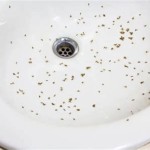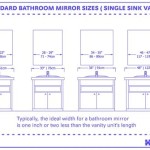Bathroom Basin Sealant: The Essential Guide
A well-sealed bathroom basin is crucial for maintaining a clean and functional bathroom. Preventing water damage and ensuring a seamless look requires using the appropriate sealant.
Types of Bathroom Basin Sealants
There are various types of bathroom basin sealants available, each with its advantages and uses:
- Silicone: A versatile and commonly used sealant with excellent water resistance and flexibility.
- Acrylic: A cost-effective sealant that is easy to apply and remove, but less durable than silicone.
- Polyurethane: A high-performance sealant with superior adhesion and durability, but can be more difficult to apply.
- Butyl rubber: A sticky and waterproof sealant suitable for sealing joints between dissimilar materials, such as metal and glass.
Choosing the Right Sealant
The choice of sealant depends on the specific requirements of your bathroom basin and the materials involved. Consider the following factors:
- Water resistance: The sealant should have high water resistance to prevent leaks.
- Flexibility: The sealant should be flexible enough to accommodate movement in the basin or surrounding materials.
- Adhesion: The sealant should adhere well to the surfaces being sealed.
- Compatibility: Ensure that the sealant is compatible with the materials of the basin and surrounding area.
- Durability: The sealant should withstand daily use and cleaning.
Applying Bathroom Basin Sealant
To ensure a successful application, follow these steps carefully:
- Clean and dry the surfaces to be sealed thoroughly.
- Apply masking tape around the edges of the basin to create a clean line.
- Apply the sealant evenly using a caulking gun or a spatula.
- Smooth the sealant using a damp finger or a smoothing tool.
- Remove the masking tape immediately after smoothing.
- Allow the sealant to cure according to the manufacturer's instructions.
Maintenance and Replacement
Regular maintenance is essential to ensure the longevity of the sealant. Inspect the sealant periodically for cracks or gaps and reapply as needed. If the sealant becomes damaged or deteriorated, it should be removed and replaced entirely.
Choosing and applying the appropriate bathroom basin sealant is crucial for preventing leaks, maintaining a clean bathroom, and enhancing the overall appearance of your space. By following the tips outlined in this guide, you can ensure a successful and long-lasting sealant application.
How To Seal A Sink Eys

How To Seal A Sink Eys

Sealing Around A Bath

3 35m X 28mm Sealing Strip Bath Shower Sink Basin Edge White Sealant Tape

Caulk Or Sealant Which Is Right For Your Bathtub Badeloft

Plumbing Sealant Waterproof Protection For Bathrooms

Bathroom White Silicone Sealant Sealing Tape Self Adhesive Waterproof Pe Fruugo Tr

M Seal Sanitary Flexable Sealant 100g Tube

Ge Sealants How To Install A Drop Sink

How To Apply Silicone Sealant Handy Squad London







